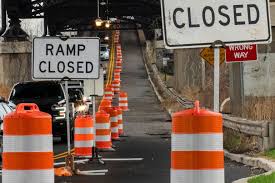
Breaking News
 Health and Sanitation of Pastured Laying Hens | Farm Like a Lunatic with Joel Salatin
Health and Sanitation of Pastured Laying Hens | Farm Like a Lunatic with Joel Salatin
 The Ghost of Jimmy Carter Comes Back to Haunt America:
The Ghost of Jimmy Carter Comes Back to Haunt America:
 Coffee brewing methods can have a big impact on heart health
Coffee brewing methods can have a big impact on heart health
Top Tech News
 Watch the Jetson Personal Air Vehicle take flight, then order your own
Watch the Jetson Personal Air Vehicle take flight, then order your own
 Microneedles extract harmful cells, deliver drugs into chronic wounds
Microneedles extract harmful cells, deliver drugs into chronic wounds
 SpaceX Gigabay Will Help Increase Starship Production to Goal of 365 Ships Per Year
SpaceX Gigabay Will Help Increase Starship Production to Goal of 365 Ships Per Year
 Nearly 100% of bacterial infections can now be identified in under 3 hours
Nearly 100% of bacterial infections can now be identified in under 3 hours
 World's first long-life sodium-ion power bank launched
World's first long-life sodium-ion power bank launched
 3D-Printed Gun Components - Part 1, by M.B.
3D-Printed Gun Components - Part 1, by M.B.
 2 MW Nuclear Fusion Propulsion in Orbit Demo of Components in 2027
2 MW Nuclear Fusion Propulsion in Orbit Demo of Components in 2027
 FCC Allows SpaceX Starlink Direct to Cellphone Power for 4G/5G Speeds
FCC Allows SpaceX Starlink Direct to Cellphone Power for 4G/5G Speeds
Here are 3 major steps the U.S. should take to improve its infrastructure

Natural disasters and extreme weather events are hammering America's aging infrastructure. A new report lays out what the U.S. needs to do now to fix it, and it's building more, better, and smarter infrastructure, from bridges, broadband, and dams to roads, levees, and parks.
The United States has made slight improvements to its infrastructure, according to the report from the American Society of Civil Engineers (ASCE), a professional organization, but it still has a long ways to go, and it better pick up the pace because there are growing risks to public safety and the economy.
The ASCE gave infrastructure in the U.S. a C grade, citing forward momentum, but the U.S. faces a "substantial investment gap," according to the report. Its authors recommended policymakers and lawmakers take three steps to close the gap: sustain their investments, prioritize resilience, and advance policy and innovation.
Sustain investment
The new rating is up from C- in the group's most recent report, released in 2021, and the ASCE cited the bipartisan Infrastructure Investment and Jobs Act that former President Joe Biden signed into law for prompting the improved grade. More than 66,000 projects were funded by the law, including repairs and improvements to more than 196,000 miles of road and improvements to more than 1,500 airports. The group called Biden's law "the most comprehensive federal investment in the nation's infrastructure in U.S. history," but said it will take time to fully come into effect.
"Recent federal and state investments have had a positive impact, but the full force of increased funding will take years to realize," the report's authors wrote. "Sustained investment is key to providing certainty and ensuring planning goes to development, as well as making larger infrastructure projects attainable."
The group said after the bipartisan infrastructure law expires in 2026, Congress should maintain its investment levels.
Prioritize resilience
In addition to an overall score, the ASCE infrastructure report rated 18 individual categories, from aviation to wastewater. No category received an A rating. The highest-rated categories were ports and rail, which received a B and B-, respectively, and the lowest-rated categories were stormwater and transit, which both received Ds. The ASCE named extreme weather and disasters as pressing reasons for the U.S. to upgrade its infrastructure now.

 Ah... for "Democracy"
Ah... for "Democracy"  How Big Tech Plans To Read Your Mind
How Big Tech Plans To Read Your Mind AI, Nature & Legal Personhood
AI, Nature & Legal Personhood


